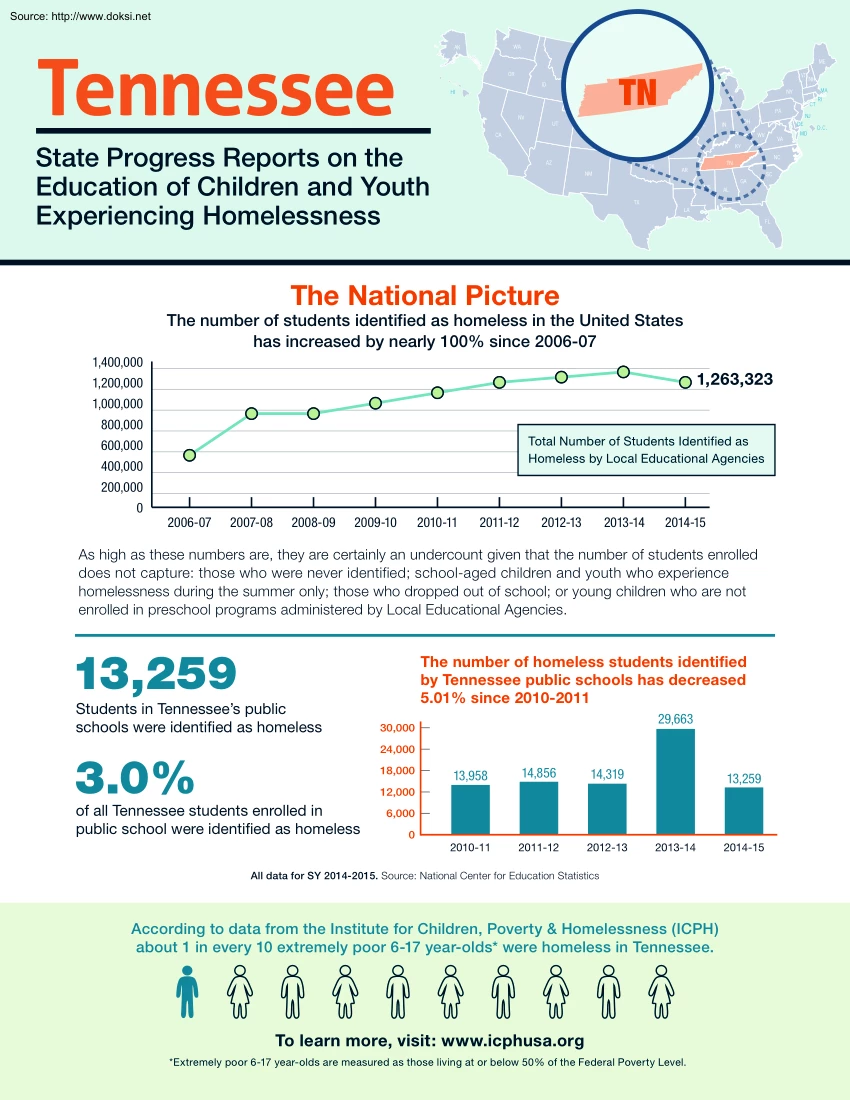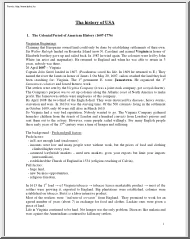Please log in to read this in our online viewer!

Please log in to read this in our online viewer!
No comments yet. You can be the first!
What did others read after this?
Content extract
Source: http://www.doksinet Tennessee WA AK ND MT ID WY NE NV MN VT SD HI WI CO PA AZ MO OK NM OH IN VA KY NC TN AR SC MS GA AL TX LA FL The National Picture The number of students identified as homeless in the United States has increased by nearly 100% since 2006-07 1,400,000 1,263,323 1,200,000 1,000,000 800,000 Total Number of Students Identified as Homeless by Local Educational Agencies 600,000 400,000 200,000 0 2006-07 2007-08 2008-09 2009-10 2010-11 2011-12 2012-13 2013-14 2014-15 As high as these numbers are, they are certainly an undercount given that the number of students enrolled does not capture: those who were never identified; school-aged children and youth who experience homelessness during the summer only; those who dropped out of school; or young children who are not enrolled in preschool programs administered by Local Educational Agencies. 13,259 Students in Tennessee’s public schools were identified as homeless 3.0% The
number of homeless students identified by Tennessee public schools has decreased 5.01% since 2010-2011 29,663 30,000 24,000 18,000 13,958 14,856 14,319 2010-11 2011-12 2012-13 13,259 12,000 of all Tennessee students enrolled in public school were identified as homeless 6,000 0 2013-14 All data for SY 2014-2015. Source: National Center for Education Statistics According to data from the Institute for Children, Poverty & Homelessness (ICPH) about 1 in every 10 extremely poor 6-17 year-olds* were homeless in Tennessee. To learn more, visit: www.icphusaorg *Extremely poor 6-17 year-olds are measured as those living at or below 50% of the Federal Poverty Level. 2014-15 RI NJ DE WV KS MA CT IA IL NH NY MI UT CA State Progress Reports on the Education of Children and Youth Experiencing Homelessness ME TN OR MD D.C Source: http://www.doksinet Students may experience homelessness at any point during their life, from Pre-K all the way through postsecondary
education. 3.1% 533 of children under age 6 experience homelessness in Tennessee FAFSA applicants in Tennessee were determined to be (or at risk of becoming) an unaccompanied homeless youth Estimate based on number of school-age children experiencing homelessness each year. Source: SchoolHouse Connection, This Is How I’m Going To Make A Life for Myself Source: Administration for Children & Families, U.S Department of Health and Human Services Who Is Considered Homeless? According to federal education law (the McKinney-Vento Act), a student is considered homeless who “lacks a fixed, regular, and adequate night-time residence.” This definition specifically includes children and youth living in emergency shelters and transitional housing; cars, campgrounds, and other places not meant for human habitation; hotels or motels due to lack of adequate alternative arrangements; and sharing the housing of others temporarily due to loss of housing, economic hardships, or similar
reasons. Public schools, Head Start/Early Head Start Programs, programs that receive Child Care and Development Fund (CCDF) subsidies, institutions of higher education, and school meal programs are required under federal law or regulation to use this definition of homelessness. 77.8% of homeless students in Tennessee’s public schools stayed with others while homeless Source: NCHE, Consolidated State Profiles Homelessness is not a homogenous experience. Students may be homeless with their families, on their own, or both on their own and with their families. They may stay in a shelter, motel, car, or with other people because they have nowhere else to go. Homelessness is often a recurring issue with many experiencing homelessness more than once. A quality education is an essential component to ensure that children and youth are able to establish themselves as fiscally stable adults, preventing them from becoming homeless in the future. School can be at the forefront of preventing
and ending student homelessness by serving as the epicenter of supports and resources those students and their families need. Find out more at: http://bit.ly/youthhomeless
number of homeless students identified by Tennessee public schools has decreased 5.01% since 2010-2011 29,663 30,000 24,000 18,000 13,958 14,856 14,319 2010-11 2011-12 2012-13 13,259 12,000 of all Tennessee students enrolled in public school were identified as homeless 6,000 0 2013-14 All data for SY 2014-2015. Source: National Center for Education Statistics According to data from the Institute for Children, Poverty & Homelessness (ICPH) about 1 in every 10 extremely poor 6-17 year-olds* were homeless in Tennessee. To learn more, visit: www.icphusaorg *Extremely poor 6-17 year-olds are measured as those living at or below 50% of the Federal Poverty Level. 2014-15 RI NJ DE WV KS MA CT IA IL NH NY MI UT CA State Progress Reports on the Education of Children and Youth Experiencing Homelessness ME TN OR MD D.C Source: http://www.doksinet Students may experience homelessness at any point during their life, from Pre-K all the way through postsecondary
education. 3.1% 533 of children under age 6 experience homelessness in Tennessee FAFSA applicants in Tennessee were determined to be (or at risk of becoming) an unaccompanied homeless youth Estimate based on number of school-age children experiencing homelessness each year. Source: SchoolHouse Connection, This Is How I’m Going To Make A Life for Myself Source: Administration for Children & Families, U.S Department of Health and Human Services Who Is Considered Homeless? According to federal education law (the McKinney-Vento Act), a student is considered homeless who “lacks a fixed, regular, and adequate night-time residence.” This definition specifically includes children and youth living in emergency shelters and transitional housing; cars, campgrounds, and other places not meant for human habitation; hotels or motels due to lack of adequate alternative arrangements; and sharing the housing of others temporarily due to loss of housing, economic hardships, or similar
reasons. Public schools, Head Start/Early Head Start Programs, programs that receive Child Care and Development Fund (CCDF) subsidies, institutions of higher education, and school meal programs are required under federal law or regulation to use this definition of homelessness. 77.8% of homeless students in Tennessee’s public schools stayed with others while homeless Source: NCHE, Consolidated State Profiles Homelessness is not a homogenous experience. Students may be homeless with their families, on their own, or both on their own and with their families. They may stay in a shelter, motel, car, or with other people because they have nowhere else to go. Homelessness is often a recurring issue with many experiencing homelessness more than once. A quality education is an essential component to ensure that children and youth are able to establish themselves as fiscally stable adults, preventing them from becoming homeless in the future. School can be at the forefront of preventing
and ending student homelessness by serving as the epicenter of supports and resources those students and their families need. Find out more at: http://bit.ly/youthhomeless




